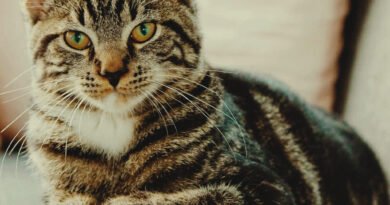Crocodile Ferns Are the Easy Houseplant You Should Start Growing in Fall -by Alexandra Jones
Karin de Mamiel / Getty Images
Crocodile ferns are epiphytic ferns named for the markings on their long, lance-shaped fronds. The crisscrossed veins on their vivid green foliage resemble the scaly skin of a crocodile. Though they’re native to the jungles of Malaysia, crocodile ferns are popular indoor plants in temperate climates.
Crocodile ferns prefer warm temperatures, high humidity, and bright, indirect light. Here’s how to help this plant thrive in your home.
Common Name
Crocodile fern
Botanical Name
Microsorum musifolium
Family
Polypodiaceae
Plant Type
Herbaceous, perennial
Mature Size
2-3 ft. tall and wide
Sun Exposure
Partial
Soil Type
Rich, moist, well-drained
Soil pH
Acidic, neutral
Hardiness Zones
10-11 (USDA)
Native Area
Malaysia
Crocodile Fern Care
Here are the main care requirements for crocodile fern:
Put in a place with bright, indirect light.Plant in a well-drained potting mix.Water to keep the soil evenly moist.Fertilize monthly with diluted houseplant fertilizer.
Want more gardening tips? Sign up for our free gardening newsletter for our best-growing tips, troubleshooting hacks, and more!
Light
Like many ferns, crocodile ferns grow best with bright, indirect light that mimics their natural habitat of forest floors or growing as an epiphyte on tree trunks below the canopy.
Put this plant in a north-facing or east-facing window, or several feet from a south-facing or west-facing window. Make sure it stays out of direct sunlight, which can burn the leaves and damage the plant.
Soil
Plant crocodile fern in a loose, well-drained potting mix that holds moisture. You can use standard houseplant potting mix with a few handfuls of orchid bark added, or make your own mix by combining two parts peat moss or coco coir, one part perlite, and one part orchid bark.
Water
Water your crocodile fern to keep the soil evenly moist but not soggy during the spring and summer. Instead of watering on a set schedule, regularly check the soil moisture and water when the surface has just begun to dry out.
In the fall and winter, cut back on watering and allow the soil to nearly dry out before watering again.
Temperature and Humidity
Crocodile ferns prefer temperatures between 65°F and 75°F with a relative humidity of at least 50 percent. Temperatures should never drop below 50°F, which is too cold for this plant.
To increase the moisture in the air around your crocodile fern, group it together with other tropical plants or run a small humidifier nearby.
Fertilizer
Feed crocodile fern with a balanced liquid houseplant fertilizer diluted to half strength once per month in the spring and summer. Start fertilizing when you first see new growth in early spring and continue until fall. Stop fertilizing during the cold months.
Propagating Crocodile Fern
The easiest way to propagate crocodile fern is by dividing a mature plant. The best time to do this is in spring or summer during the plant’s active growth period.
Before you begin, gather fresh potting mix, small plant pots, clean pruners or scissors, and optional gardening gloves. Here’s how to propagate crocodile fern.
Remove the mature plant from its pot and examine the root ball. Examine the roots of the plant to identify natural divisions. Each division should have several leaves attached to its own healthy root system.Gently pull the divisions apart at the crown of the plant with your fingers. If necessary, use scissors or pruners to cut apart stubborn roots.Fill a plant pot for each division halfway with fresh potting mix. Plant each division in a pot, adding potting mix so that the soil surface hits the same place as the original planting.Water the divisions thoroughly and put them in a warm place with bright, indirect light.Care for the divisions as usual. You’ll know they’ve established in their new pot when you see new fronds growing.
Frequently Asked Questions
Should I mist my crocodile fern?
Contrary to popular belief, misting doesn’t meaningfully raise humidity for houseplants. To increase the humidity around your crocodile fern, group it together with several other houseplants to create a microclimate or run a small humidifier nearby.
Is crocodile fern low maintenance?
Yes. With basic care and the proper conditions, crocodile fern is a low-maintenance houseplant.
Are crocodile fern and bird’s nest fern the same?
No. These plants may have some similarities in appearance, but they are in different plant families.
Read the original article on The Spruce.
The Spruce Latest Stories

:max_bytes(150000):strip_icc():format(jpeg)/crocodile-fern-25b2a6224831409dbe460557c0431a7d.jpg)


